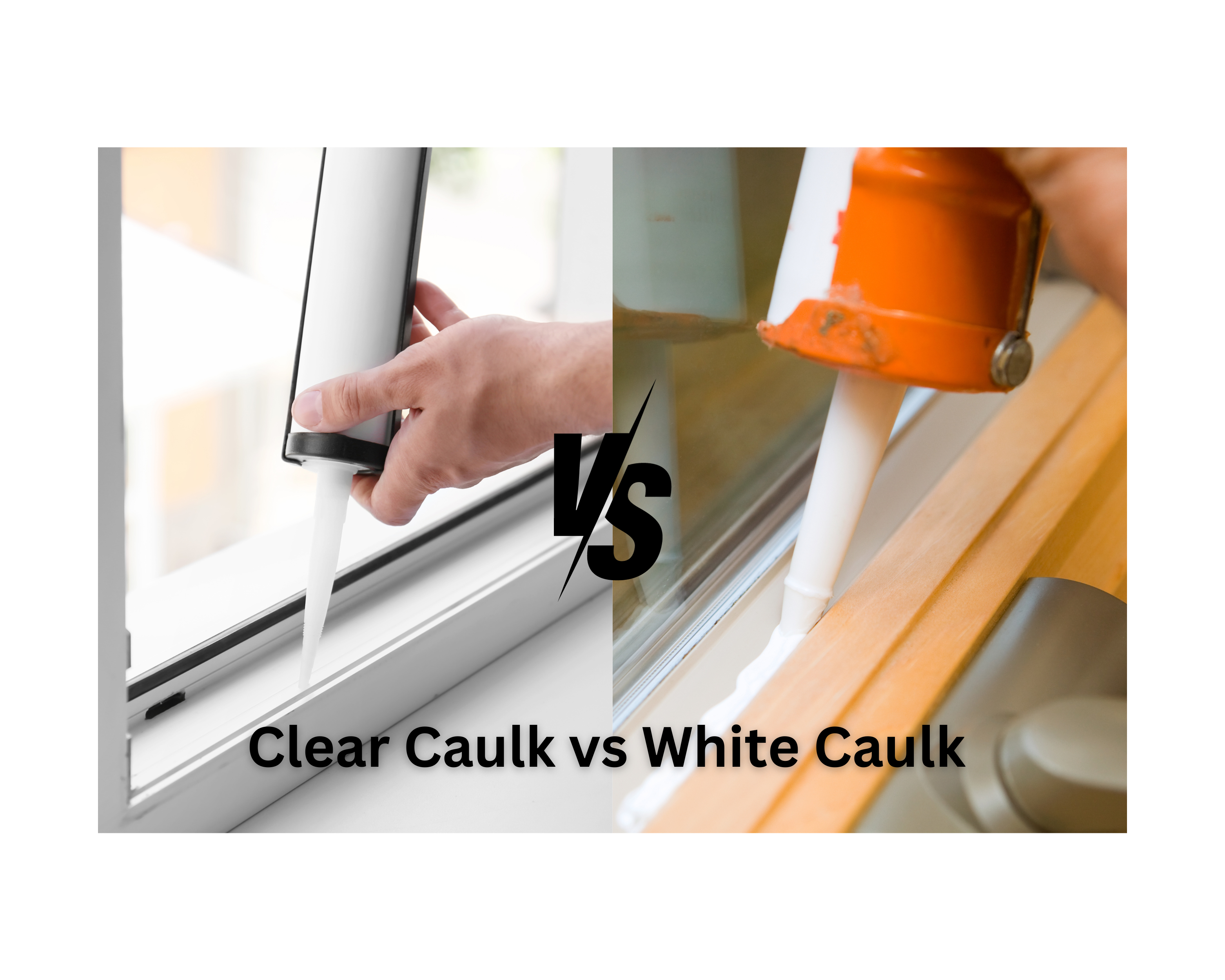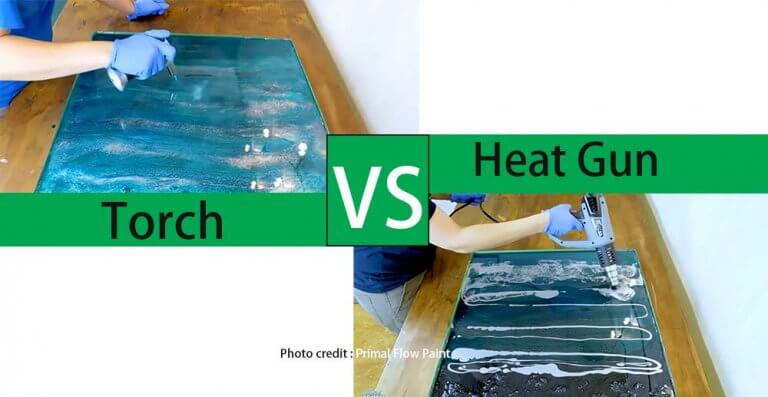Clear vs White Caulk – Which One should I should I Choose?
As an Amazon Associate I earn from qualifying purchases.
Clear caulk and white caulk are both made of silicone, acrylic, and latex materials and are used to fill gaps and cracks. Using a caulking gun or a finger, both are ideal use in wet areas to create a watertight seal and mildew resistance.
The clear caulk is transparent and matches the color of any surface and is used mostly on windows, doors and showers. On the other hand, white caulk is opaque and noticeable on the surface but is more durable and used mostly on bathtubs, toilets, and sinks.
In this article, I will give you the elaborate advantages and disadvantages of Clear vs White Caulk and let you know which one you should choose in which situation.
Contents
Comparison Table between Clear Caulk and White Caulk
| Features | Clear caulk | White caulk |
| Color | Transparent | Opaque |
| Purpose | Fill gaps and crack | Fill gaps and crack |
| Translucency | Yes | No |
| Appearance | Less visible | More visible |
| Durability | Less [change color fast] | More |
| Useable surface | Tile, glass, wood and metal. | Tile, glass, wood and metal. |
| Cost | Same | Same |
Clear Caulk vs White Caulk
Clear Caulk

Clear caulk is a silicone-made sealant used to fill gaps and cracks. This caulk is transparent, so you can use this in places where you don’t want visible sealant.
You have to apply the clear caulk using a caulking gun and a finger and let it dry; then, you will get a clean and watertight seal in cracks in the tile, countertops, and other surfaces.
White Caulk

Clear caulk is a silicone-made sealant used to fill gaps and cracks. This caulk is not transparent and is easily visible as white pigment added here. But it is more durable and doesn’t lose its color fast.
You can use this caulk where you want to desire visible sealant. Just apply the white caulk using a caulking gun or a finger and let it dry; then, you will get a clean and watertight seal in cracks in the tile and repair holes in drywall, countertops, and other surfaces.
Similarities and Dissimilarities Between Clear Caulk and White Caulk
Similarities
Material: White and clear caulk made of silicone, acrylic, and latex material and both are durable and flexible and stop water and air leakage.
Purpose: The purpose of both caulks is the same as both cover the gaps.
Useable surface: Both the white and clear caulk can be used on tile, glass, wood and metal.
Cost: Both caulk’s tubes are available in various sizes, and they cost almost the same in different stores.
Availability: In every hardware store, you will get these white and clear caulk sealants.
Dissimilarities
Color: Clear and white caulk differ in color. Clear caulk’s color is transparent, and white caulk color is opaque.
Translucency: Clear caulk is translucent, as light can pass through this, and it looks good on the surface as its color matches on any surface. On the other hand, white caulk is not translucent, as light cannot pass through for its white color.
Appearance: As clear caulk is transparent for that reason it is less noticeable on the surface. While for white color, white caulk is more noticeable on the surface.
Durability: White caulk is more durable than clear caulk because it slowly gets yellowish. The clear caulk gets yellow fast, which makes it weaker fast.
Versatile: Clear caulk is more versatile than white caulk as you can use it on several surfaces and can preserve the original appearance, which you won’t get from white caulk.
Ease of use: Clear caulk can be used in places like windows, doors and showers. On the other hand, white caulk can be used in places like bathrooms, kitchens, toilets and sinks.
Which one should I choose between Clear caulk or White caulk?
Where to use clear and where to use white caulk depends on the specific application and the desired appearance.
Clear caulk is translucent and should be used where a visible sealant is not wanted and wants to preserve the original appearance, such as around windows and doors. It is also an excellent solution for sealing cracks in tile, countertops, and other surfaces where the sealer should blend in with the surrounding area.
White caulk is opaque and should be utilized in areas that require a visible sealant, such as around bathtubs and sinks and planning to paint over the caulk as it is more receptive to paint. It’s also useful for sealing cracks in tile grout, patching plasterboard holes and matching the color of white tile and other surfaces.
How to use Clear caulk and White caulk
The process of using clear or white silicone caulk is the same. You just have to fix the place where you want to use the which one and follow the process.
First, clean and dry the surface. If the surface is wet and has moisture, the caulk won’t stay there long enough and won’t get a better result.
Note: While using clear silicone, if the surface remains wet after applying it on the surface, it will get white. So, make use to keep the surface dry.
Secondly, Cut the tip of the caulk tube as you mostly use it on the corners; for that, cut it at a 45-degree angle.
Thirdly, Insert the caulk into the caulking gun, or you can use a finger and put a little pressure to apply it to the cracks or gaps.
Fourthly, after applying the caulk, use your finger or hard paper or knife to smooth out the caulk bead.
Fifthly, let the caulk dry for one or two days so that it attaches to the surface perfectly and provides long time service.
Frequently Asked Questions
Should I use decorators caulk or silicone?
Depending on your specific sealing job, if you want more durable and watertight sealing on wet areas like bathtubs, sinks and toilets, then choose silicone caulk.
But if you want paintable and easily applyable sealing on windows, doors and dry areas, then choose decorators caulk.
Does clear caulk change color?
Yes, it changes color while applying and after applying. If you apply clear caulk on a wet surface, it may get white from transparent. After applying it sealing exposed to direct sunlight or dirt and dust, it will most commonly change to yellowish, grey or brown color.
Should I use white or clear caulk on vanity backsplash?
Choosing between white and clear caulk on the vanity backsplash depends on your specific look and feel. If the color of your vanity and backsplash is white, then you should choose white caulk for a clean and fine finish.
If the vanity or backsplash color is different from each other or they are not white, then you should choose clear caulk to have a less noticeable, subtle look.
Why does white silicone go yellow?
White silicone goes yellow mostly because of the UV light, dirt and dust. If white silicon is exposed to direct sunlight, it gets a yellowish look, and if the sealing is placed in dirt and dust, it gets a yellowing and brown look.
Conclusion
Both caulk is made in the same process; the only difference is the added color. Where in the clear caulk, there is no color pigment added, and in the white caulk, there is white color pigment added.
Other comparisons I have already given throughout the article. I hope you have understood the differences and understand which one is preferable for which appearance. Thank you.





![U-shank Vs T-shank Jigsaw Blades [Let's Clear the Confusion] 13 U-shank Vs T-shank Jigsaw Blades](https://toolsgig.com/wp-content/uploads/2021/10/U-shank-Vs-T-shank-Jigsaw-Blades-768x314.jpg)